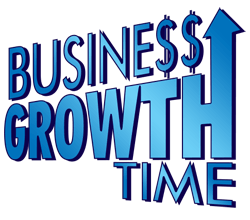Episode 61 – 10 Lessons for Better Communications
We discuss the 10 Lessons for Better Communications
Listen to Episode via Podcast:
Watch the Episode on Video:
Time Stamped Show Notes:
Communication is the key:
- In relationships
- In the workplace
- In your business
- Across your lifetime
- To your success
Here are the top 10 of these lessons:
- Lesson #1: Communication is about Listening
- Lesson #2: Asking Questions
- Lesson #3: Smile!
- Lesson #4: Know your audience!
- Lesson #5: Understand your Personality type
- Lesson #6: We Communicate through our perspective
- Lesson #7: Be Yourself
- Lesson #8:Be Patience
- Lesson #9: Understanding the Communication Channels
- Lesson #10: Say Please & Thank you
Lesson #1 – Communication is about Listening
Being able to communicate with others is one of the best life skills a person can develop. Someone who can effectively communicate thoughts, ideas, and feelings is better equipped for success both on the job and in personal relationships.
Listening Skills are vital for interpersonal communication.
3 Types of Listening
- Active Listening (Listening to Confirm Mutual Understanding)
- Critical Listening (Listening to Evaluate and Analyse)
- Empathetic Listening (Listening to Understand Feeling and Emotion)
Lesson #2 – Asking Questions
We tend to avoid expressing our own needs or wants, or we fail to express them clearly. If you want something, ask for it clearly. That’s what confident and effective people do.
2 Types of Question you will need to ASK
- Open-ended question – is designed to encourage a full, meaningful answer using the subject’s own knowledge and/or feelings.
- Close-ended question – It is the opposite of a closed-ended question, which encourages a short or single-word answer
Lesson #3 – Smile!
It’s such a simple act, which can communicate so many positive things, and can brighten up somebody’s day. Smiling is generally the act of the confident and the happy.
Lesson #4 – Know your audience.
Understand where the people your communicating are, relate to them so they can relate to you.
A Quote from – William Butler Yeats – “Think like a wise man but communicate in the language of the people”.
- Be considerate of your audience
- How much of your audience understands what you are talking about?
- Speak in the language and acronyms of your profession, but also spell it out clearly for your prospects
Lesson #5 – Understand your Personality.
When you understand what your Type of Personality is you can understand how to relate it better
to other people your communicating with.
Briggs Myers’ 16 Personality Types
The purpose of the Myers-Briggs Type Indicator (MBTI) personality inventory is to make the theory of psychological types described by Carl Jung.
Lesson #6 – Communicate through our perspective.
A good strategy for communicating more effectively is to help your audience listen more effectively. To make your message more “listenable,” you have to be able to understand it from your listeners’ perspective.
Lesson #7 – Be Yourself.
Don’t change your personality. Communication can be used as a way to create a false impression about yourself. Instead, use communication as a way to express your true self, without regrets and without excuses. Authentic communication is the way to build great partnerships and to get the best results.
(Total Assessment Personality Profile)
A good strategy for communicating more effectively is to help your audience listen more effectively. To make your message more “listenable,” you have to be able to understand it from your listeners’ perspective.
Lesson #8 – Be Patient.
Sometimes communication takes time. You have to get through to people. The best way to do so is to know how your communication is being perceived.
Lesson #9 – Understanding the Communication Channels.
- Communication channels are often considered from the standpoint of richness, or the degree to which a channel is able to convey the amount of information transmitted in face-to-face communication.
- Because communicating face-to-face allows sender and receiver to use and observe nonverbal communication and vocal qualities that complement or contradict the verbal message, it is said to be the richest channel, with other channels being less rich as supplemental elements are removed from the transmission.
- Make sure you take the time to understand what channels your audience perceives.
Lesson #10 – Say Please & Thank you!
The Importance of Manners – How Saying Please Can Get You What You Want. So how does all this help the person saying please and thank you?
Manners make you seem grateful, empathetic, mild mannered and pleasant; and obviously this is going to make people more likely to want to spend time with you.
Whatever lessons you put into practice in your communication, remember to enjoy the process. It can be as meaningful as the destination of having cutting edge communication skills.
Bottom line – Most importantly, keep in mind that communication is not about you, your opinions, your positions or your circumstances. It’s about helping others by meeting their needs, understanding their concerns, and adding value to their world.
Where to find us:
Twitter: @bizgrowthtime
Join us in our Facebook Group: Business Growth Time
Looking for content ideas to post on your Social Media sites? Then you will love our Guide! You can Download the Ultimate Guide to Social Media Content Creation…and it is absolutely free.
Ways to subscribe to the Business Growth Time Show or Podcast:

![]()
- Click here to subscribe via iTunes.
- You can also subscribe via Stitcher, Google Play & Libsyn
Help Us Spread the Word!
If you enjoyed this episode of the Business Growth Time podcast, we’d love a review!!! Please head over to iTunes, leave a rating, write a review and subscribe.

